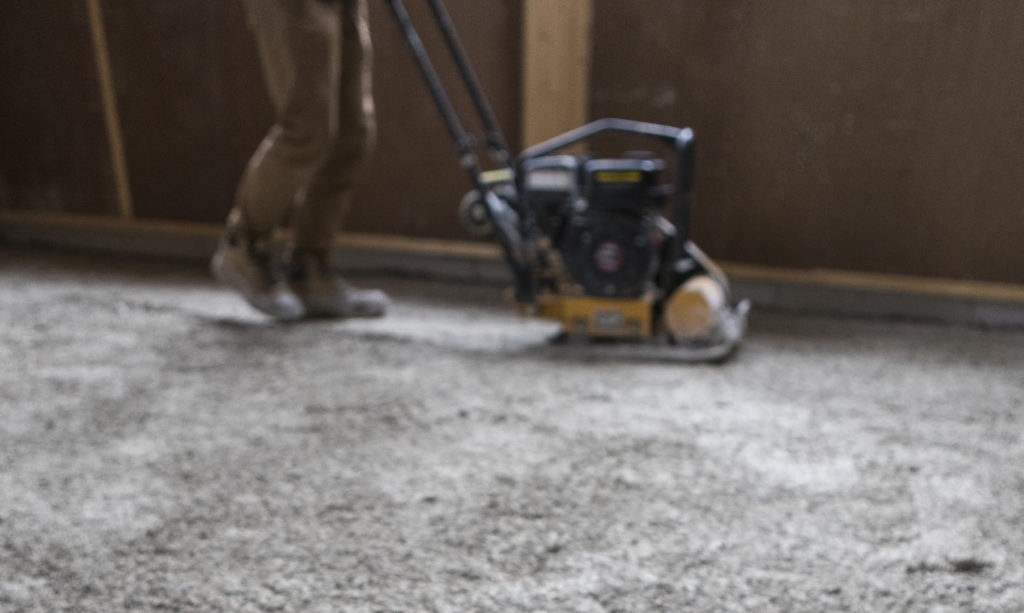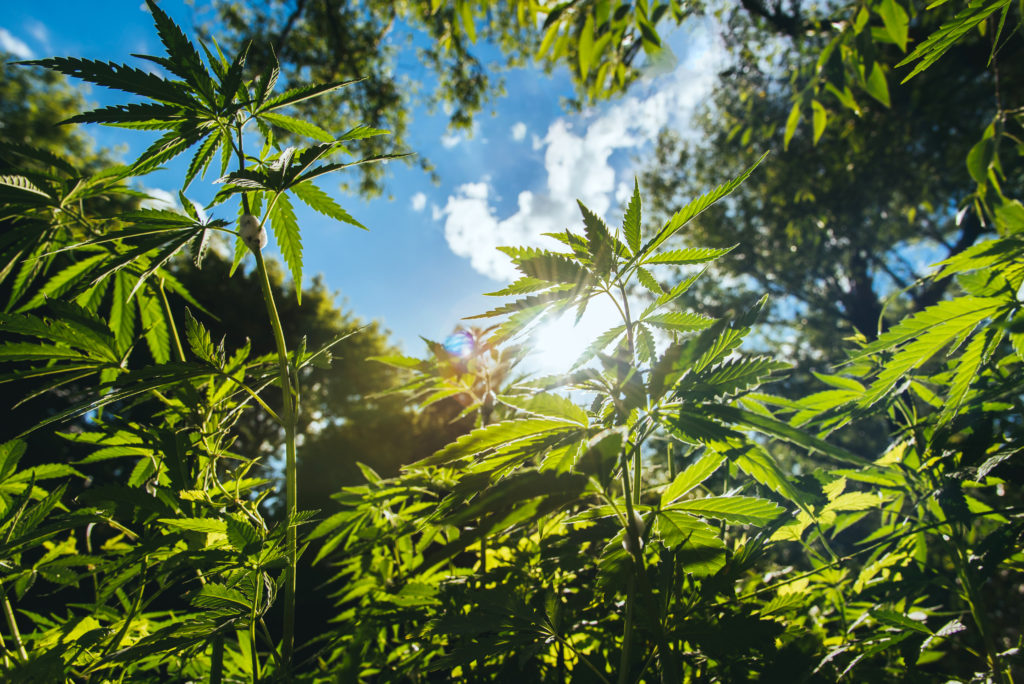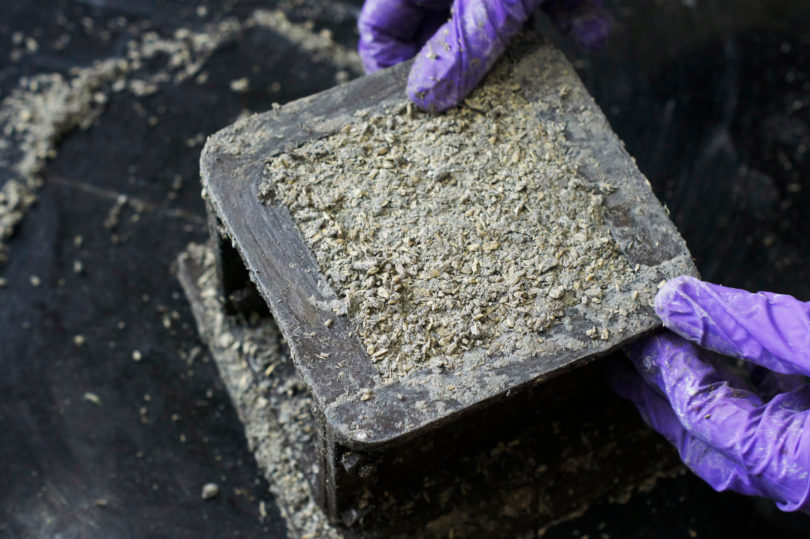As you may have already heard, hemp is one of the world’s most sustainable and versatile materials.
But it’s not only a nutritious addition to your diet, great for skin, and able to be made into textiles. Part of the hemp plant can also be used to build what could be the world’s most eco-friendly housing solution, hempcrete structures.
What is Hempcrete?

Hempcrete was first discovered in 6th century France. It’s a composite material made up of the inner “woody” part of the hemp plant. It’s then mixed with water and lime-based binder to create ‘hempcrete’.
This woody inner contains lots of silica, something which is unique to hemp in comparison to other natural fibers. This silica makes everything bind together strongly in order to create what’s known as Hempcrete.
The result is a lightweight, cement-like material. It’s an eighth of the weight of concrete, but ten times stronger. So Hempcrete is pretty tough! Especially considering some Hempcrete buildings have lasted for over 14 centuries.
How is hempcrete produced?
The hemp crop is super easy to maintain, because it requires no pesticide, fungicide or fertilizer. Most of the plant that goes into making hempcrete is excess material from other industries which use hemp. Usually, it’s harvested for its rich Omega oils and for supplements, as well as fibers to make textiles.
Since it was recently rediscovered, hemp has become more popular as a building material thanks to its eco-friendly yet practical features. We’ll look into this more shortly.
Is Hempcrete legal?
Industrial hemp is produced in Europe by certified growers so that the crop is extremely low is THC (>0.2% by EU regulations). Because of this reason, it’s not at all psychoactive. Farmers have to buy their seeds from registered sellers and once in a while their crops will be inspected.
In America, growing hemp was illegal for many years. This was because of its association with its psychoactive sister, the Marijuana plant. But thanks to the 2018 farm bill, growers now have the ability to produce industrial hemp once again.
Benefits of Hemp as a building material
Zero carbon footprint

The hemp plant absorbs high levels of CO2 from the atmosphere as it grows. Also, the production and use of hempcrete are both very low impact processes. Even when you take into account the transport and energy used in the construction of hemp structures, the amount of carbon they lock away in their lifetimes outweighs all of this.
Hempcrete walls are also great at insulating. It has greater thermal properties than most regular building materials, so in comparison the energy used by those living in the building is hugely reduced.
Damp-free walls
Hempcrete is super breathable and can stay damp-free. This is because the hempcrete and lime plaster absorb moisture from the air into the walls when humidity is high. They then release it into the air when humidity levels drop. This stops mold being able to grow and keeps the humidity at a level which stops bacterial growth. All of this without the need for a ventilation system!
Stay warm and cool
So we’ve already touched on the thermal performance of hempcrete. Buildings made from hemp stay constant in temperature whatever the weather. This is thanks to its combination of insulating effects and thermal mass. As a result, hempcrete homes are really comfortable – warm in winter and cool in summer.
Making use of waste by-product
Hemp has an extremely high yield that can’t be matched by other crops. Typically it’s grown for the seeds or to make hemp fiber. Because regular hemp production doesn’t utilize the woody inner of the plant, it’s considered a by-product.
Using this otherwise wasted material makes hempcrete an eco-friendly solution for waste reduction in this industry.
Non-toxic building materials

Because hemp doesn’t need pesticides or fungicides in order to grow, this causes much less environmental damage. Regular construction uses a lot of synthetic and potentially toxic materials. These can cause dampness, mold and also release toxic chemicals.
But once placed in walls, hempcrete doesn’t give off toxins or gases to the indoor space. The lime binder mix is also anti-fungal and stops growth of bacteria, making it a safer building material all around.
Fire resistance
Your hemp house won’t burn down without a fight. Hempcrete blocks will char slightly when burnt, but they’re much more fire-resistant than regular homes. They can hold out from catching fire for up to two hours, depending on the size and thickness of the blocks.
Final thoughts
It’s hard to deny all the benefits of building with hempcrete. This innovative material is a great use of what would otherwise be a waste product and it requires less maintenance over time. Hempcrete walls are non-toxic, able to stay dry and absorb CO2 from the atmosphere. They also have the bonus of being fire resistant.
Not only is it healthy for those living in the house, but for these reasons hempcrete is also better for the environment. Not to mention the fact that its thermal performance adapts to the weather, so you’re using less energy in general.
So if you’re considering living the ultimate eco-friendly life, it’s safe to say you need a hempcrete home.









